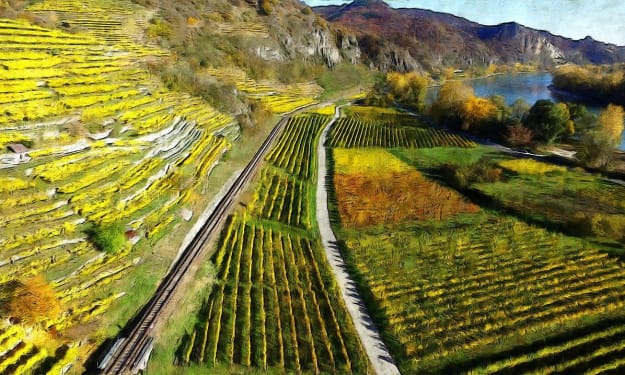
**Adapting to the Challenges of Climate Change**
Climate change, driven by human activities and their impact on the environment, is no longer a distant threat but a pressing reality. As the world experiences rising temperatures, shifting weather patterns, and increasing instances of extreme weather events, the need for adaptation strategies has become paramount. Adapting to the challenges of climate change is not only a matter of survival but also an opportunity to build resilient communities and a sustainable future.
**Understanding the Need for Adaptation:**
The effects of climate change are already evident across the globe. Sea levels are rising, glaciers are melting, and heatwaves are becoming more frequent and intense. Such changes pose direct threats to ecosystems, infrastructure, agriculture, and human well-being. Recognizing the inevitability of these changes, adaptation becomes a necessary approach to mitigate potential risks and minimize damage.
**Resilience in the Face of Uncertainty:**
Adaptation involves enhancing the resilience of communities, systems, and infrastructure to withstand the impacts of climate change. This resilience goes beyond just building physical structures; it encompasses social, economic, and environmental aspects as well. Developing flexible and adaptable systems can help societies bounce back from disruptions and continue functioning effectively.
**Local Solutions for Global Problems:**
Effective adaptation often starts at the local level, where communities are better equipped to understand their unique vulnerabilities and craft tailored solutions. Local governments, businesses, and citizens play crucial roles in identifying and implementing strategies that can make a significant difference. This might include measures like constructing flood-resistant buildings, establishing early warning systems, and diversifying crops to cope with changing precipitation patterns.
**Innovations Driving Adaptation:**
Innovation has a pivotal role in aiding adaptation efforts. Technological advancements, data analytics, and artificial intelligence enable us to better predict and manage climate-related risks. For instance, smart sensors can monitor changes in water levels, helping communities respond promptly to potential flooding. Similarly, advanced modeling can guide urban planning to avoid the construction of critical infrastructure in high-risk areas.
**Synergy between Mitigation and Adaptation:**
Mitigation and adaptation are two sides of the same coin in the fight against climate change. While mitigation aims to reduce greenhouse gas emissions to slow down the pace of change, adaptation deals with managing the changes that are already underway. Balancing both approaches is crucial for an effective response. A city, for instance, might simultaneously invest in renewable energy sources while fortifying its coastline against rising sea levels.
**Global Cooperation for Effective Adaptation:**
Climate change knows no borders, and its effects reverberate across the globe. Therefore, international cooperation is essential in sharing knowledge, resources, and best practices for adaptation. Developing nations often bear the brunt of climate impacts, and wealthier nations have a responsibility to support their efforts in building resilience.
**Education and Public Awareness:**
Raising public awareness about the importance of adaptation is vital for garnering support and action. Educational initiatives can inform individuals about the local and global impacts of climate change, empowering them to make sustainable choices and advocate for adaptation measures.
**Nature-Based Solutions:**
In the quest for effective adaptation strategies, nature itself can provide invaluable solutions. Nature-based adaptation involves harnessing the power of ecosystems to mitigate climate impacts. Wetlands, forests, and coastal mangroves act as natural buffers against floods and storms. Restoring and protecting these ecosystems can not only enhance biodiversity but also provide cost-effective and sustainable protection for communities. Nature-based solutions also include practices like reforestation, green infrastructure development, and sustainable agriculture that work in harmony with the environment to build resilience and combat climate change. Embracing these solutions can create a harmonious balance between human development and the preservation of our planet's natural systems.
**Conclusion:**
Adapting to the challenges of climate change requires a multifaceted approach that combines technological innovation, local action, international cooperation, and public engagement. As we navigate an increasingly uncertain future, the ability to adapt will determine our collective ability to thrive in the face of adversity. By embracing adaptation strategies, we not only safeguard our communities but also pave the way for a more resilient and sustainable world for generations to come.
About the Creator
Paul Vera
Paul Vera: Environmental writer. Passionate about Earth's beauty and conservation. Inspiring action through impactful words. 🌎📚 #EnvironmentalAdvocate
Reader insights
Outstanding
Excellent work. Looking forward to reading more!
Top insights
Compelling and original writing
Creative use of language & vocab
Easy to read and follow
Well-structured & engaging content
Expert insights and opinions
Arguments were carefully researched and presented
Eye opening
Niche topic & fresh perspectives






Comments (1)
This information is really helpful for who really needs this. I hope you will many more write post like this. https://www.mayoclinicpatientportals.com/